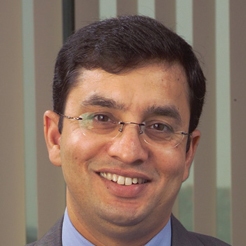Interview with Sanjay Nayak, Co-Founder & CEO, Tejas Networks Limited

In an interview with tele.net.in, Sanjay Nayak, co-founder and chief executive officer, Tejas Networks Limited, discusses the challenges faced in increasing the penetration of broadband in the country and the need to introduce affordable 3G and 4G plans for consumers. Excerpts…
How has the broadband segment performed over the past one year?
According to a recent Ovum report, the number of mobile broadband subscribers more than tripled, from about 11 million in end-2010 to about 36 million in end-2011. Going forward, the fixed broadband segment is expected to add 12 million users.
While the growth of broadband in terms of percentage looks impressive, the actual number of connections as a percentage of total connections is quite small, if we consider the 600 million plus mobile voice connections and the country’s population. The bulk of these additions (almost 75 per cent) took place on the small screen (mobile handsets) and mostly comprises 3G subscribers.
India has a long way to go if it has to match the broadband penetration rates in developed countries. However, broadband in India has begun to pick-up and we expect to see growth similar to that witnessed in mobile voice in the last decade.
What are the key challenges faced in improving the uptake of these services?
There’re many challenges faced by the broadband segment. One big challenge is the low penetration of computers and laptops in the country. However as technology progresses, smartphones and tablets are becoming the dominant device used to access the internet. The availability of affordable tablets will overcome this challenge. Another challenge is in the low percentage of the English speaking population. For broadband to reach the masses, the content will need to be developed in Indian languages.
A third challenge is the price sensitivity of the Indian market. A large percentage of the population can only afford to pay a couple of hundred rupees for broadband, and hence innovative pricing models will be needed from service providers. This is a challenge, owing to the high initial investments required and the low volumes of subscribers. However as the number of subscribers increase, service providers will be able to bring down the cost per subscriber and broadband prices should follow the same graph as that of the mobile voice industry.
How will the launch of next generation technologies like 3G and 4G impact the applications in the broadband space?
3G and 4G offer the most potential for increasing the broadband penetration in the country. This is due to several factors. First, PC penetration in India is still low and most users will be using broadband on their smart-phones or tablets. Second, mobile broadband is the quickest way to satisfy the needs and demands of a country that requires an increasing amount of bandwidth. It is easier to erect mobile towers and provide coverage to a few hundred square kilometers than to lay copper or fiber to each subscriber for wireline broadband.
What technology trends do you foresee in this segment?
Long Term Evolution (LTE) over BWA spectrum is the most promising technology over the next few years. LTE is a fourth generation mobile technology, which is optimised for high speed broadband and for data applications. Also, it takes advantage of advanced modulation schemes in the wireless space due to which it has the best packing efficiency in terms of the number bits it can pack per unit of spectrum.
How far will the government projects such as the National Optic Fibre Network help in uptake and improving the reach of broadband services?
Mobile broadband provides wireless connectivity from subscriber to the mobile base station, thereby solving the issue of last mile. However, once this traffic reaches the base station, it needs to be carried to the core network where all the servers for internet services are located. The amount of traffic generated by these base stations is huge, and hence a very high speed backbone is needed to backhaul this traffic. For example, each LTE base station generates about 270Mbps of traffic, and an access ring consisting of 4-5 base stations will easily need more than 1Gbps of connectivity. The next level aggregation network will go upto 10Gbps speeds, and the metro core will be at least 50-100Gbps.
As of today, only optic fiber technology is capable of handling these kinds of speeds. Hence the government project will be crucial in improving the fiber penetration throughout the country in order to increase the broadband coverage. Also, since fiber laying is expensive, and needs right of way (which the government has), the government is best placed to build these optic fiber backbones, which will form the superhighways for these broadband networks.
What is your regulatory wish list for broadband services?
We would advise the government to streamline and reduce the right of way charges for optical fiber, as this can make it economically viable to build higher-capacity networks. This will also help realise government’s vision of “broadband on demand” and over 600 million broadband subscribers by 2020, as stated in the New Telecom Policy.
- Most Viewed
- Most Rated
- Most Shared
- Related Articles
- R.K. Upadhyay, Chairman and MD, BSNL
- Interview with Shashin Devsare, Executiv...
- Interview with Marten Pieters, MD and CE...
- Marten Pieters, Managing Director and Ch...
- B.S. Shantharaju, CEO, Indus Towers
- Views of Sandeep Nair, MD, Emerson Netwo...
- Interview with Samaresh Parida, Director...
- Interview with Himanshu Kapania, Deputy ...
- Interview with J.S. Sarma, Chairman, TRA...
- Views of Dhananjay Pavgi, Principal Cons...






